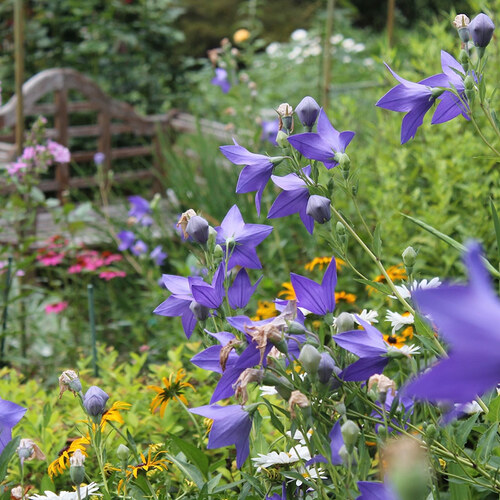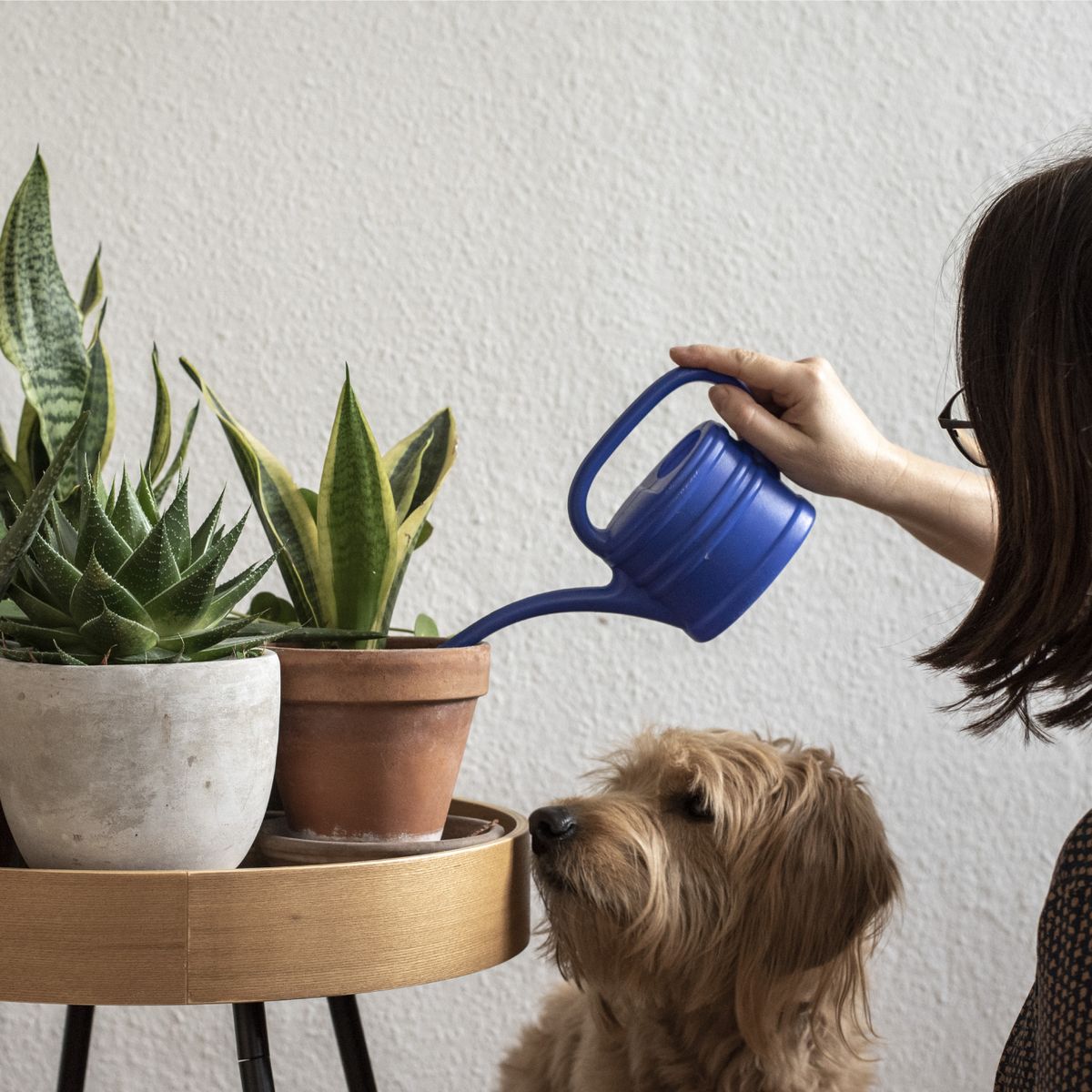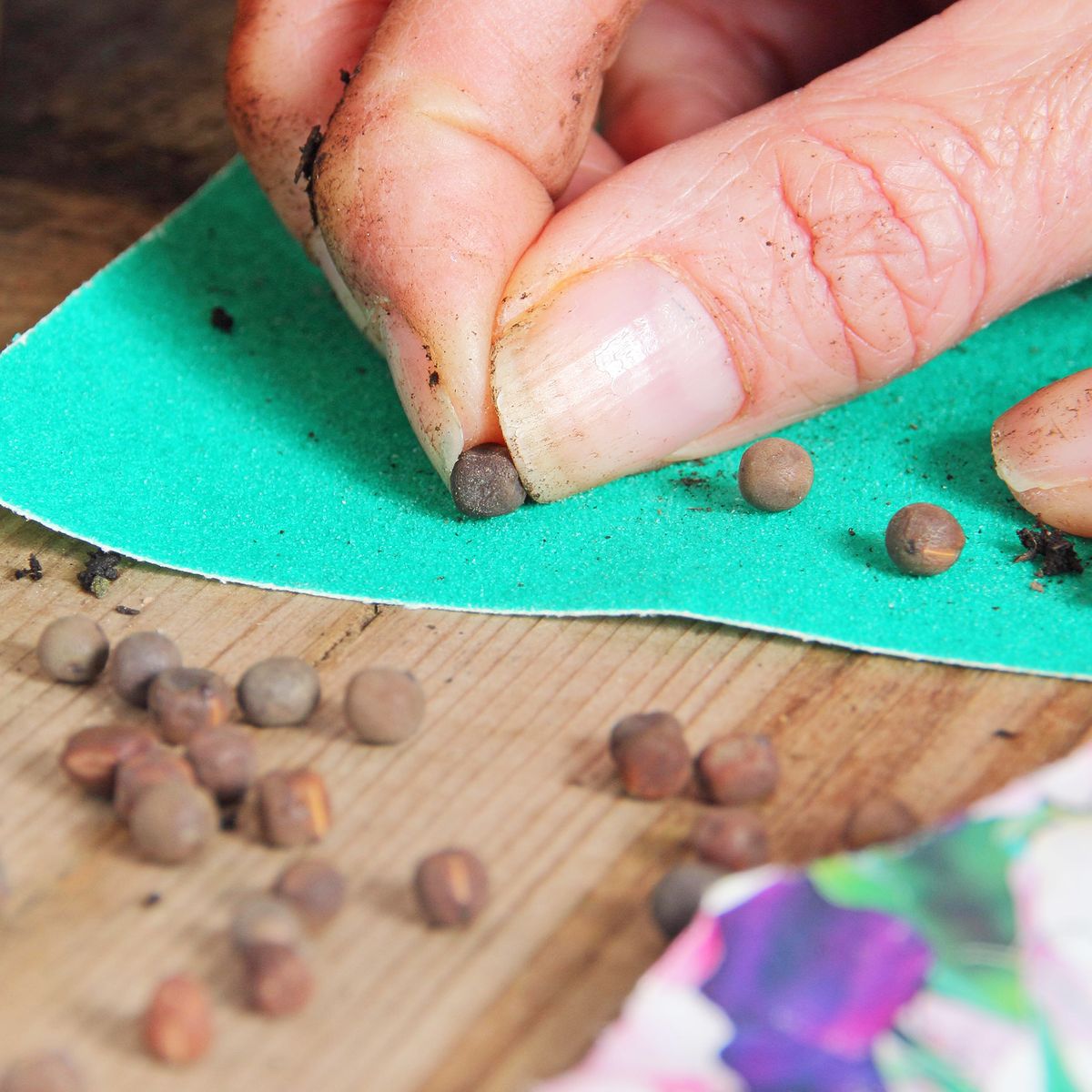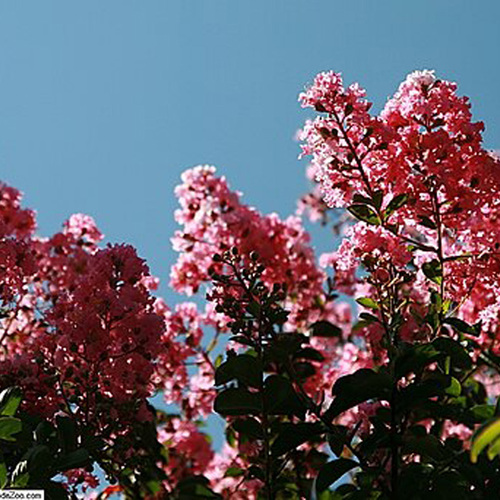Often, beginner gardeners can think that growing their own vegetables might be too big a step for them, that they should start with something ‘easy’… not knowing that growing vegetables is in fact quite often very easy! While there are some that take some babying, the list of the easiest vegetables to grow is in fact quite long. Our list only touches the surface of what’s out there that you can master with ease!
When it comes to gardening, more than knowing any single plant, it’s important to know good growing conditions in general. Humans have been growing their own food for thousands of years, and until recently, they didn’t have a home gardening center to help them out. They were able to accomplish this feat by looking for rich, well-drained soil, waiting until after the last spring frost to first plant certain crops, and growing a variety of crops including growing flowers, herbs, and tubers from seeds traded for with others for genetic diversity.
We’ve broken down some of the easier crops for you to grow. Some we’ve included on the list like cherry tomatoes and basil because many gardeners are already buying these regularly at the local grocery store. Others, like green beans and leaf lettuces, we’ve included because they’re so prolific you’ll feel more than accomplished when you see their harvests. Radishes and bok choy we’ve added because in just a few weeks you can get a quick harvest and see for yourself just how easy it is to grow vegetables in your own garden.
We’ve broken our list into two sections: cool-season crops that grow best at temperatures under 70 degrees Fahrenheit, and warm-season crops that grow best when temperatures are over 70 degrees Fahrenheit. Always keep the temperature in mind when planting!
Cool Season Crops
Radish

The easiest of the easy crops, radishes are a super fast-growing flavor powerhouse. These little bundles of crunch can grow in as little as 30 days, with some varieties requiring a little more time to grow. This is a cool to mild season crop that can sometimes be harvested in as little as 3 weeks after sowing. They grow well in both the spring and fall but are not frost tolerant. Beginner gardeners will find that this could very well be the first crop that they ever ‘direct sow’ directly into the garden soil. If you also grow lettuce, add a row of radishes right between your rows of leaf lettuce.
There are a number of super interesting radish varieties to choose from. Some favorites are the beautiful watermelon radish or the large daikon radish. Both of these are great for pickling when you discover a larger-than-expected harvest! Both the root and leaves of this plant are edible.
Learn More: Radish or Daikon Radish
Bok Choy

Another cool-season crop, bok choy is a great vegetable for stir-fries and soups and is great for anyone that’s in need of fiber. A wide variety of types are now available and easily sourced. This is one of the first crops to be planted when the turn of the seasons happens in late summer and gardeners look to a new round of plants to start.
This crop does well when direct-sown, but for gardeners in climates with shorter planting windows, try starting this crop indoors and transplanting out when cooler temperatures arrive. Bok choy enjoys moist soil and full sun during cooler temperatures, or partial shade when planted in the spring. This is a great crop for continual sowing. Simply plant more bok choy seeds every 2-3 weeks to achieve a continual harvest.
Harvest this leafy green as soon as the leaves are large enough to pluck or cut off your plant, and can be harvested continuously until it begins to flower. Several tasty and interesting varieties include a purple variety, the tender green pak choy, and a stout white stemmed variety.
Learn More: Bok Choy
Onions

While slow to start from seed, onions can easily be grown from something called ‘sets’. These are like miniature onions that were grown from seed during the previous season. They need to be placed in ground at the start of the cool weather season and allowed to grow for 3-5 months before harvest.
Depending on the variety and your climate, you can get quite a large harvest of onions in a relatively short amount of time. This is a cool-season crop that cannot survive the snow. Come spring, be very aware of the type of onion needed for your growing zone. Onion varieties are grouped by the number of daylight hours your plants need to form good bulbs, so find out the number of sunlight hours in your area before purchasing.
Some great varieties to look out for are Red Cabernet onion for day-neutral growers. For short-day growers, try the Vidalia equivalent called Yellow Granex. Long-day growers should seek out the coveted Walla Walla or Rossa di Milano.
Learn More: Onions
Peas

One of the easiest vegetables to grow, peas are extra sweet nuggets that are even sweeter when harvested straight from the garden. As the amount of sugar in the pea begins to break down once the pod is picked, you’ll find that the peas straight from the garden are much sweeter than what you find at the grocery store.
There are three different types of peas to choose from come planting season. Shelling and snap peas both grow to maturity before being eaten, while snow peas are eaten while the interior pea is still immature and only partially formed.
Depending on how you plan on eating your peas, you can grow different varieties for this prolific and easy crop that will quickly fill up your garden beds. For shelling peas try ‘Green Arrow’, for snap peas look for ‘Cascadia Sugar Snap’, and for snow peas look for ‘Carouby de Maussane’.
Learn More: Peas or Snow Peas
Potatoes

Wherever you plant potatoes, you’ll have potatoes until the end of time! This plant is so easy to grow you won’t be able to get it to stop. Potatoes do best in soft and loose soil with adequate drainage and can even be grown from those older soft potatoes you find at the back of your cabinet.
To grow, simply place an ‘eye’ or sprouted portion about 4” underneath the soil level and cover loosely with soil. Once they’ve sprouted and reached about 6 inches in height, ‘hill’ your potatoes by adding soil around the base of the plant and covering the bottom stem and leaves leaving the top few inches above soil. Additional tubers will grow along the stem where buried for an even larger crop. A cool-season crop, depending on the length of your cool-season search for early season, midseason, or late-season varieties that would work best in your area. Potatoes struggle in hot weather, so plan accordingly.
Learn More: Potatoes
Lettuce

A fast-growing leafy green, lettuce is one of the easiest and best veggies to grow from seed. Given how inexpensive the seed is for how many seeds you get, it’s actually quite easy to sprinkle the seeds in a part of your garden where you’re already growing a bulb crop like onions, beets, or garlic, and companion plant this fast-growing nutritious plant. Fresh lettuce is a wonderful addition to the kitchen table, and salad greens are always their best when freshly picked from a garden bed.
To make growing lettuce even easier, try growing varieties that mature after a different amount of days to get a continual harvest over several weeks. Plant lettuce in rows 6-10 inches apart, and at a depth of 1/8th of an inch. Sometimes, just lightly pressing the leaf lettuce seed into the soil and watering it in is deep enough. Try varieties Bronze Beauty, Little Gem, or Tom Thumb.
Learn More: Lettuce
Kale

From the brassica family, kale is a prolific and easy-growing plant. Whether started from seed, or transplanted out, kale can be repeatedly harvested for months, and in some mild climates, for years on end. Kale is rich in vitamins and nutrients and continually puts out more leaves along a thick central stalk.
If growing from seed, plant at a depth of 1/4” in seed starting trays and transplant out when they reach about 4 inches in height. Place plants at least 1’ away from one another in rows 18” apart. They may seem far apart, but these crops can be prolific and produce very large leaves ranging from curly greenish-purple in Russian kale, to the dark green leaflets of the classic Lacinato kale. Kale does well both in raised beds and containers and takes up less space than other leafy greens.
Learn More: Kale
Beets

A simple crop that grows better from seed than transplant, beets are essentially an enlarged taproot that, when roasted or pickled, becomes incredibly tasty! Beets are eaten both for their roots and greens. Grown from a rather large seed, it’s pretty easy to evenly space these seeds out when planting. Try direct sowing seeds about 4-6” apart, in rows about 8” apart at a little less than one inch deep.
Beets are very high in vitamin C, folate, iron, and potassium and make a wonderful addition to the vegetable garden. Easily able to be companion planted with lettuces, brassicas, and other surface crops, these quick-growing root vegetables are wonderful. For a classic red beet try the Bulls Blood Beet, or for a golden twist, try the beautiful Golden beet.
It isn’t just lettuce that can be companion planted, as beets are another popular intercrop plant. When you grow vegetables, you’ll find that some of the easiest vegetables to grow can often be companion planted together, providing a harvest both below and above ground.
Learn More: Beets
Warm Season Crops
Beans

Beans are tender annuals that have a way of coming back year after year. A quick-growing crop, beans can be either fresh as green beans, or as mature dried beans. Depending on how you plan on using beans, you’ll want to look for different varieties.
Beans come in two main growing categories, bush varieties or pole types. Bush beans grow rapidly and produce one large harvest over a short 2 week period. Pole beans often grow to a height of 8-10 feet when given the space to grow and produce over a longer period, sometimes for more than a month from a single plant. There are also some super cool Asian varieties with beans that grow almost a meter long! Kids have lots of fun harvesting these beans throughout the growing season.
For green bean plants, look for yard-long beans, Kentucky Wonder, or the Dragon Tongue Bush Bean. If growing beans for dry beans, try the Jacob’s Cattle Bush Bean or Cave Bean.
Learn More: Beans, Pole Beans, Fava Beans, Mung Beans, or Soybeans
Summer Squash

Looking for a prolific addition to the vegetable garden? Look no further than the delicious summer squash family. Home to a very wide variety of summer squashes, this is the family that includes zucchini, crookneck squash, and even the many varieties of pattypan squash.
This type of squash is best planted from seed in the early spring in moist warm soil. With a large seed, it’s easy to direct sow in the garden. Read the packet to see how large your squash plants get, as it has been known to easily take over entire garden beds when mature in search of ample space. Summer squash put out both male and female flowers. You can expect a rapidly growing summer squash to appear over the following weeks. Throughout the growing season, you can expect a large crop of fresh vegetables from any squash plant in your garden.
For standard zucchini try the zucchini Black Ball. For more interesting varieties, experiment with Lemon Squash, Crookneck Early Golden Squash, or the New Zealand Kamo Kamo Squash.
Learn More: Summer Squash
Cherry Tomatoes

There are thousands of varieties of cherry tomatoes in the world. These tomatoes are wonderfully easy to grow as their stems are prolific and will often wind their way around your garden before you can even stop them. Dozens of small cherry tomatoes form along stems that pollinate themselves (a problem that larger tomatoes can sometimes experience) and they can produce for a few months.
Cherry tomatoes need to be planted in full sun, preferably with some sort of garden support like a tomato cage. They need plenty of water and lots of space for their roots to take off. A great option for container gardening, cherry tomatoes are the hardiest of tomato plants, probably because they’re the original tomato plant as larger beefsteak style tomatoes were only hybridized a couple of hundred years ago. The fruit starts to develop after around 80-100 days, bringing in a fast harvest.
For flavor, it’s hard to beat the classic and golden Sun Gold tomato or the Supersweet 100. For a dark red cherry tomato that contains anthoniacin, try the Indigo Cherry tomato. Brad’s Atomic Grape is wildly colored due to anthoniacin as well if you’re after something interesting!
Learn More: Cherry Tomatoes
Basil

Not quite a vegetable but close enough in our books, basil is a divine gift from heaven meant for your palate. Basil is a fast-growing leafy green that enjoys the heat of summer and all-day sun. Easily grown from seed in seed-starting containers and planted out, basil is a pretty hearty grower that can grow in window boxes, loose dirt, rocky soil, or even large pots. While most vegetables have a lot of requirements around growing conditions, basil just needs direct sunlight, some water, and well-drained soil to take off.
Plant seeds about 1/8” to 1/4” deep in mid-June, or whenever you have several months of warm weather on the horizon. Plant a few rows 18” apart if growing in-ground, or 1-2 plants per 12” container if sown directly into pots. A great option for small spaces or limited space and easily started indoors, basil is an all-around trooper. While there are a wide variety of basils, we recommend the classic, ever-dependable Genovese.
Learn More: Basil
Peppers

While not everyone may think that pepper plants are easy to grow, we think they are! When grown in the right conditions with well-rotted manure or compost worked into your garden soil, peppers take off in warm weather with full sun (think 8 hours a day minimum). Be sure to keep your soil moist and you’ll have your own vegetables in no time. You can either sow seeds directly into the soil and lightly cover, or transplant. We recommend planting varieties of sweet peppers found in seed catalogs over sweet peppers found at larger garden centers. Many of the transplants found in garden stores don’t have the same flavor as heirloom varieties. For some hearty and delicious peppers, try growing the King of the North pepper, the Ajvarski Pepper, or the Manganji Sweet Pepper.
Learn More: Bell Peppers or Jalapeno Peppers
Frequently Asked Questions
Q: What vegetables can grow in 30 days?
A: Radishes and many leafy greens can grow in as little as 30 days.
Q: What are the easiest and most nutritious vegetables to grow?
A: Salad and stir fry greens are the easiest and most nutritious vegetables to grow. Anything from head lettuce to bok choy and kale grows easily while packing that nutritional punch!
The Green Thumbs Behind This Article:










